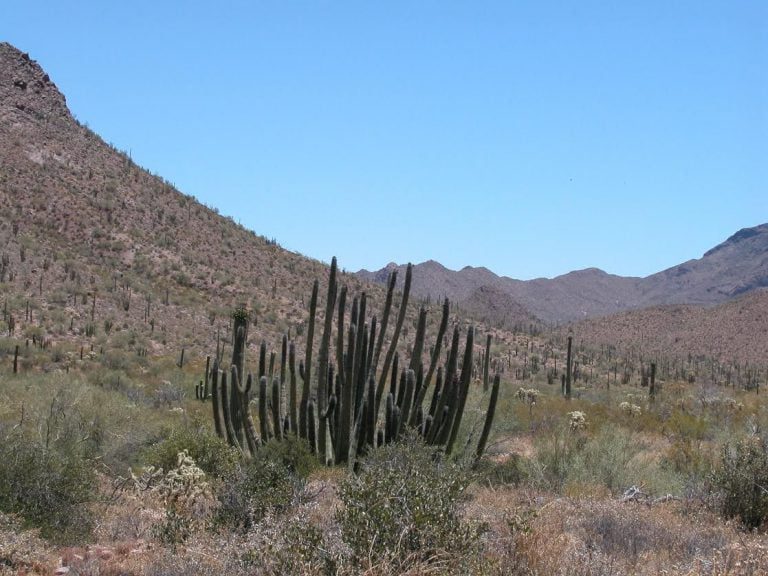
With its gorgeous pink and chocolate rocks of the Little Ajo Mountains, Organ Pipe Cactus National Monument in southwestern Arizona is the richest desert in the United States.
The Monument has trees, enormous cactus, 589 plant species, 273 different birds and 70 different mammals; including 14 kinds of bats, five native species of toads, two species of turtles, 15 different lizards, 24 varieties of snakes and 77 known butterflies.
What makes these 512 square miles of the Sonoran Desert so breathtaking? It has two rainy periods: gentle winter rains from the Pacific Ocean, plus monsoonal thunderstorms in July and August from the Gulfs of California and Mexico. Thirteen inches of precipitation per year creates a jewel of biological diversity hugging the Arizona/Mexican border.
Organ Pipe cactus grow 25 feet tall, have hundreds of arms growing from the same base and resemble pipes of a colossal organ. Their nighttime flowers (closed during the day) rely on nectar-feeding moths and the lesser long-nosed Mexican bats that migrate 1,500 miles from tropical Mexico.
Although one Organ Pipe plant may possess one hundred or more arms each bearing one dozen or so flowers, no more than one or two bloom each night. It’s an ingenious strategy that encourages cross-pollinating with distant plants and reduces inbreeding. Its delicious red fruits are eaten by many desert critters including Gila woodpeckers, squirrels, lesser long-nosed Mexican bats, coyotes and javelinas.
Organ Pipe cactus are frost sensitive and thus rare in the United States. They live on rocky soils with a southerly aspect, taking advantage of the heat cast by surrounding dark rocks especially during occasional near freezing winter nights.
The sentinel of the Sonoran, saguaro cactus, can be seen throughout the Monument. They can reach an astounding height of nearly 80 feet holding as many as 50 arms. They are massive canteens with woody ribs and accordion-like pleats. Mostly comprised of water, they can easily weigh the equivalent of two American bison. They can loose as much as 80 percent of their water when it gets hot and dry and still survive.
Their sweet red fruits are sought after by many critters. Saguaro seedlings rely upon desert trees to provide cover, protecting them from marauding animals and the blistering desert sun. The trees act as nurses but eventually they are over-topped by the sauguaros’ and subsumed.
It’s remarkable to see so many ironwood, palo verde and mesquite trees. They take nitrogen from the air, fix it in the ground, shed leaves, twigs and bark creating humus, which builds soil and holds precious water.
Organ Pipe National Monument is a must-see for all outdoor enthusiasts.
Join Earth Dr Reese Halter on his crusade to protect our planet by watching Earth Calling SOS.